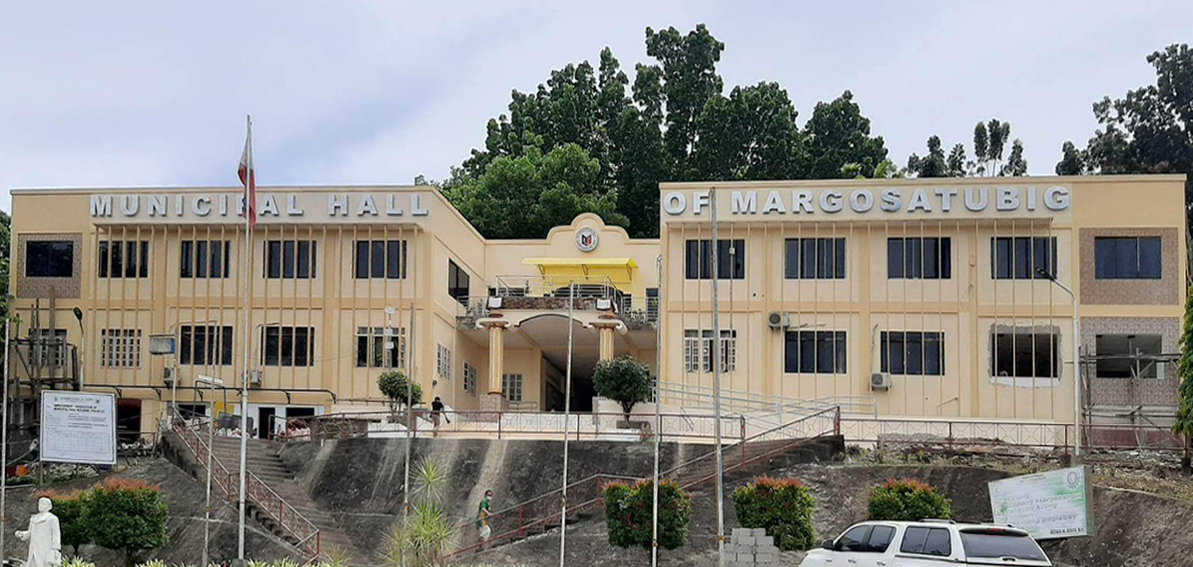About Us
- Details
- Written by: Administrator
- Category: About Margos
- Hits: 7770
http://en.wikipedia.org/wiki/Margosatubig,_Zamboanga_del_Sur
- Details
- Written by: http://en.wikipedia.org/wiki/Margosatubig#References
- Category: About Margos
- Hits: 16537
The Subanens were believed to be the first people to have settled in this land, right near the swift flowing river that now traverse the Margosatubig Pilot School and Guiwan district. “Malagus Tubig” was the original name of the town, which was taken after the swift river current that kept changing its course towards the mouth of the Dumanquillas Bay. In the 15th century, the Spaniards arrived and found that its bay is a natural refuge from bad waether for their ships. Soon it became their choice settlement changing Malagus Tubig to its present name Margosatubig. They built a huge stone fort on top of a hill that served as their bastion against Moro pirates who used to raid the settlements along the Dumanquillas Bay and its vicinity. The fort was known as Cotta Heights. In 1963, it was demolished and is now the site of Pax High School. The Spaniards reigned for years and left as their heritage most evidently, the Chavacano dialect. Suffice it to say that more than a hundred years ago, Margosatubig already existed as a settlement of migrants and natives in the 19th century.
 |
In 1950, the barrios of Punta Flecha, Pitogo, Qugbay, Balong-balong, Libertad and Dumanguilas was transferred to the newly-created town of Dimataling[1] From 1917 to 1936, Margosatubig stayed as a municipal district of the city of Zamboanga. During the Commonwealth Government and by virtue Executive Order No. 17 dated December 23, 1936 signed by President Manuel L. Quezon, Margosatubig finally became a regular and distinct municipality with eight original barrios. It can be said that Margosatubig is the oldest town in Zamboanga del Sur; older even than the undivided Province of Zamboanga.
In 1951, the barrios of Malangas, La Dicha, Diplo, Gusem, Buug, Matinaw, Gaulan, Tinungtungan, Manangon, Lindang, Luop, Silupa, Minsulao, Paruk, Lubing, Balabao, Mali, Baluran, Sampuli and Bacao, all from Margosatubig were separated to form the town of Malangas.[2]
Margosatubig, in spite of being a pioneer town, still remained isolated and reachable only by sea craft. In 1976, it was finally opened to the rest of Zamboanga del Sur by an asphalt road connecting it to Pagadian. This was facilitated by the Zamboanga del Sur Development Project undertaken by the Philippine-Australian Development Assistance Programme (PADAP), and its Electrification by ZAMSURECO-1 followed in 1979.
Margosatubig has come a long way from the settlement that it was 100 years ago. After giving birth to so many towns, Margosatubig today has retained a total land area of 11,169 hectares. It is a 3rd class municipality with 17 barangays that is home to 39,012 Margosanons of various breed and creed.
- Details
- Written by: Administrator
- Category: About Margos
- Hits: 3048
MARGOSATUBIG
Its Origin and Early Beginnings
History is obscured by lack of material information which constrains to show how Margosatubig really originated. A journey through time, however, and by the stories which have been told from ancestors to kin would make one recall that the place has a rich and interesting past that make every Margosanon appreciate his early beginning.
Accordingly, at some point in the past the Subanens were believed to be the first people to have fallen in love with this land. They settled near the swift flowing river that now traverse the Margosatubig Regional Pilot School and the Guiwan district. After clearing the surrounding heavy forest, they tilled the land and lived peacefully calling their new home “Malagus Tubig” patterned after the swift river current that kept changing its course towards the mouth of the Dumanquillas Bay. In the 15th century, the Spaniards arrived and found the place to be strategically located as being a natural shelter from the sea. Soon it became their choice settlement changing Malagus Tubig to its present name Margosatubig. They built a huge stone fort on top of a hill that served as their bastion against the raiding Moro pirates who used to plunder the sea and nearby Dumanquillas shores. The fort was familiarly known as Cotta Heights until in 1963 it was demolished and now the site of Pax High School. The Spaniards reigned for years and left as their heritage the beginnings of early government, the Chavacano dialect and their way of discipline which today are evident in some homes and families.
Margosatubig is an old municipality even older than the previously undivided Zamboanga province. It existed as a settlement of many migrants and native in the wake of the 19th century. The main industry was a big sawmill called Mindanao Lumber which continued to attract settlers from different places of the Visayas and other parts of the country. There were Cebuanos, Muslims, Tagalogs, Boholanos, Chavacanos, even traders from Amoy, China who all found the place to be a fortune for economic venture. The sawmills operation must have lasted long enough as evidenced by the saw dust that accumulated for years to significantly reclaim what we familiarly known today as Serin or San Antonio Village. With the hustle and bustle of everyday life, people learned to live together, love and intermarry with one another making the place a virtual melting pot of creed and culture.







